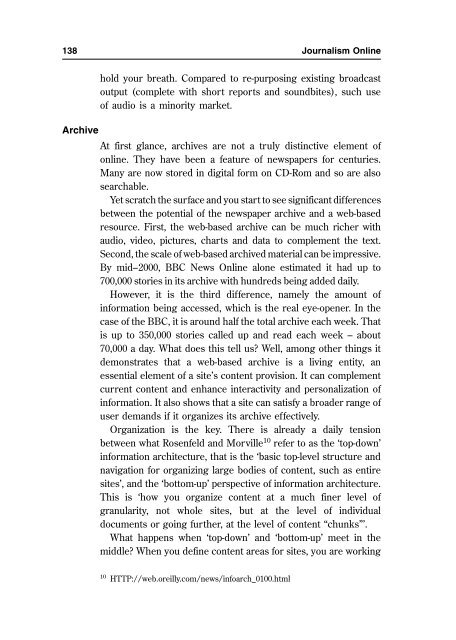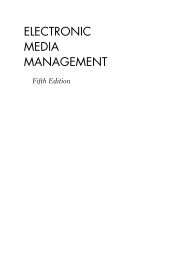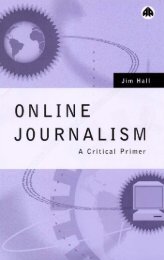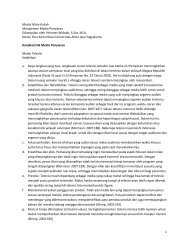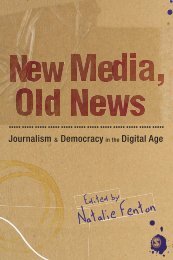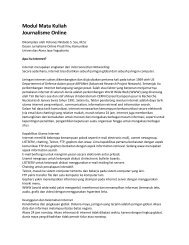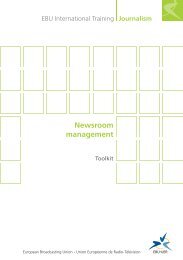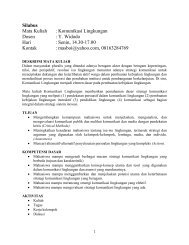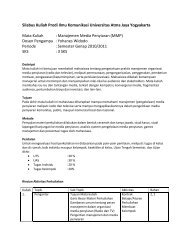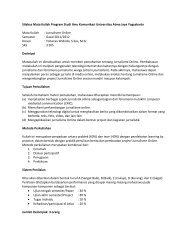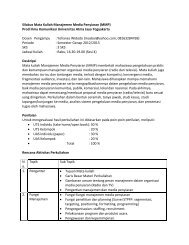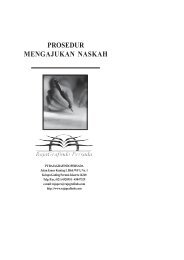1What is online journalism? - Ayo Menulis FISIP UAJY
1What is online journalism? - Ayo Menulis FISIP UAJY
1What is online journalism? - Ayo Menulis FISIP UAJY
Create successful ePaper yourself
Turn your PDF publications into a flip-book with our unique Google optimized e-Paper software.
138 Journal<strong>is</strong>m Online<br />
Archive<br />
hold your breath. Compared to re-purposing ex<strong>is</strong>ting broadcast<br />
output (complete with short reports and soundbites), such use<br />
of audio <strong>is</strong> a minority market.<br />
At first glance, archives are not a truly d<strong>is</strong>tinctive element of<br />
<strong>online</strong>. They have been a feature of newspapers for centuries.<br />
Many are now stored in digital form on CD-Rom and so are also<br />
searchable.<br />
Yet scratch the surface and you start to see significant differences<br />
between the potential of the newspaper archive and a web-based<br />
resource. First, the web-based archive can be much richer with<br />
audio, video, pictures, charts and data to complement the text.<br />
Second, the scale of web-based archived material can be impressive.<br />
By mid–2000, BBC News Online alone estimated it had up to<br />
700,000 stories in its archive with hundreds being added daily.<br />
However, it <strong>is</strong> the third difference, namely the amount of<br />
information being accessed, which <strong>is</strong> the real eye-opener. In the<br />
case of the BBC, it <strong>is</strong> around half the total archive each week. That<br />
<strong>is</strong> up to 350,000 stories called up and read each week – about<br />
70,000 a day. What does th<strong>is</strong> tell us? Well, among other things it<br />
demonstrates that a web-based archive <strong>is</strong> a living entity, an<br />
essential element of a site’s content prov<strong>is</strong>ion. It can complement<br />
current content and enhance interactivity and personalization of<br />
information. It also shows that a site can sat<strong>is</strong>fy a broader range of<br />
user demands if it organizes its archive effectively.<br />
Organization <strong>is</strong> the key. There <strong>is</strong> already a daily tension<br />
between what Rosenfeld and Morville 10 refer to as the ‘top-down’<br />
information architecture, that <strong>is</strong> the ‘basic top-level structure and<br />
navigation for organizing large bodies of content, such as entire<br />
sites’, and the ‘bottom-up’ perspective of information architecture.<br />
Th<strong>is</strong> <strong>is</strong> ‘how you organize content at a much finer level of<br />
granularity, not whole sites, but at the level of individual<br />
documents or going further, at the level of content “chunks”’.<br />
What happens when ‘top-down’ and ‘bottom-up’ meet in the<br />
middle? When you define content areas for sites, you are working<br />
10 HTTP://web.oreilly.com/news/infoarch_0100.html


